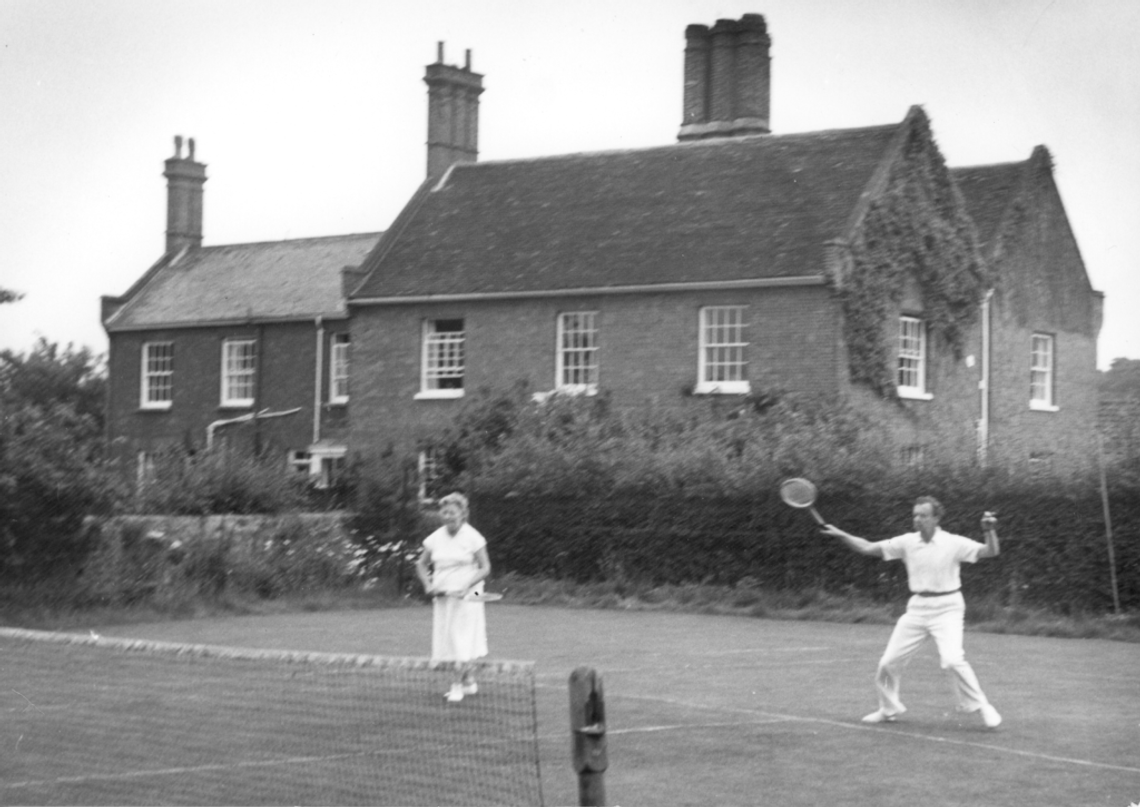
Archive Treasures: Thirty-seven love – Britten, Pears, sport and recreation at the Red House
StoriesRomanticism dies hard: over two hundred years since the movement spread Sturm und Drang over Europe, it still informs our vision of what a creative artist looks like. Composers, poets and painters are expected to be all flashing eyes, flowing locks and complicated love-life; for them, physical activity is solitary wandering over mountains, brooding over mist-shrouded peaks like a figure in a Caspar David Friedrich painting. (Alternatively, the artist leads a life of “decadence” in an attic room they never leave – one cannot, for example, imagine Oscar Wilde in a cagoule.) Solitary wandering in a wild landscape does occur in the thirty-seven years of the Britten-Pears story; for example, on 9th December 1959, Britten writes to Pears (who was away on tour) describing walking along the river wall at Aldeburgh on a dark, stormy day. He is there, however, to give the dogs a walk: a note of domesticity that is never far away.

PH/5/15: Pears, Britten and Johanni Billows, Zermatt, January 1947 (photographer unknown)
Despite the fact that for much of their lives together Britten and Pears were, in a sense, outsiders – forced, because of their sexuality, to live with the constant threat of exposure and arrest – the abiding motif of their lives together is of domestic contentment. Their rich archive documents mind, body and spirit – and the life of the body, of physical activity, is characterised by cheerful sociability, by contented togetherness. Like Caspar David Friedrich’s wanderers, they loved mountains: but they went to the Alps not to brood alone, but with friends, to ski.

PH/1/15: Britten playing cricket at South Lodge School, Lowestoft, mid 1920s (photographer unknown)
Both men played cricket as schoolboys and Pears, in particular, continued into adulthood; among the photographs in the archive is an image of Britten bowling when at his Lowestoft prep school, and a series of images taken in 1952 by the East Anglian Daily Times, showing the two men and others in cricket whites at a match forming part of the activities around that year’s Aldeburgh Festival.

PH/4/49: Britten as a teenager, with his mentor Frank Bridge, probably at Bridge’s Sussex home, 1930 (photographer unknown)
It was tennis, however, that formed the largest part in their lives – a game that Britten had played as a teenager against his mentor Frank Bridge, and which he continued to love. The archive contains a run of receipts for membership of Aldeburgh Tennis Club, and photographs of Britten playing on the public courts in town; however, even before they moved to the Red House the lawn here was familiar as a venue for tennis, the two men visiting their friends Mary and Stephen Potter here to play.

A tennis party at the Red House, mid 1950s, including Britten, Mary Potter and Laurens van der Post (photographer unknown)
Showing how important this shared social activity was to both couples, the archive includes a receipt from a Lowestoft firm for tennis equipment for the Red House court; it dates from 1953, some years before Britten and Pears moved to the Red House, but an annotation indicates that the cost was split between the two couples. When Britten and Pears move to the Red House themselves, in the wake of the Potters’ divorce, tennis expenses – balls, nets, racket restringing and so forth – become a recurring motif in their annual accounting, Eade’s in Aldeburgh billing every season. Photographs in the archive show a tennis party on the lawn at the Red House the year before Britten and Pears moved there, with Britten partnering Mary Potter against a twosome that includes the writer Laurens van der Post: sport acting as a glue that brings together the members of this creative circle. In the winter, when tennis was impossible, there were alternatives: in the winter of 1953 the two men hired the Jubilee Hall in Aldeburgh regularly to play badminton, again recorded in their financial papers.

PH/4/222-225: a tennis party at the Red House, mid 1950s, including Britten, Mary Potter and Laurens van der Post (photographer unknown)

ALURH:2019.53: RSPB membership badge from Britten’s car
As Britten grew older and more frail, sport was no longer possible: tennis equipment disappears from the household expenses at about the time of his 1973 stroke. His love of the local landscape and of walking in it remained, a constant thread throughout the archive. Photographs show him lying on the river wall, binoculars to his eyes, watching the birdlife; or, later in life, both Britten and Pears clutching binoculars as they stalk a bird through the trees of Aldeburgh Golf Club, just across the lane from the Red House. The archive documents Britten’s long membership of the Royal Society for the Protection of Birds (the subscription a gift from his sister Beth); the house holds the metal RSPB badge that would have been screwed onto his car bumper.
One of the last photographs we hold of Britten with Beth shows them sitting on the sandy heathland at Minsmere, the flagship RSPB reserve.

PH/4/496: Britten and his sister Beth Welford, at Minsmere, 1974 (photographer: Rita Thomson)
Tennis, badminton, skiing, walking, birdwatching: the thing that unites these activities for Britten and Pears is that they are social, cementing the bond with family, friends and each other, a way in which the Red House became a centre for their creative circle and a home for this loving couple.
- Dr Christopher Hilton, Head of Archive and Library

PH/3/109-110: Pears and Britten birdwatching, Aldeburgh golf course, May 1970 (photograph by Rosamund Strode)